Speedpainting Challenge #3, Tiger

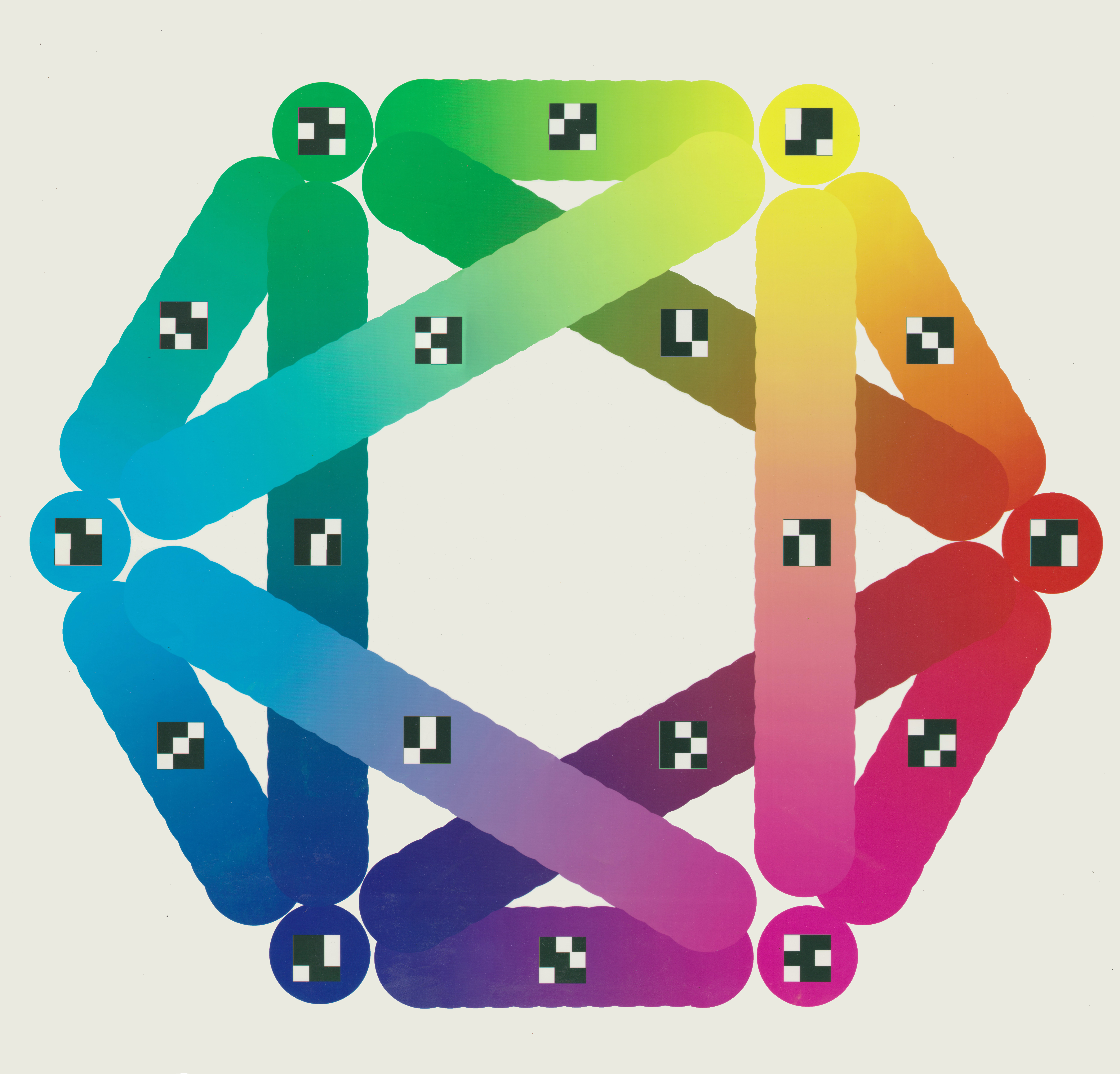
You can paint in all the colors in the chart, above, by only using 3 colors. I made this chart, years ago, to show myself how to quickly locate colors using little bars of squares (white and black squares). Let's start with cyan, magenta and yellow color paints. See how many colors you can make. The painting of the tiger only has 3 colors, CMY (cyan, magenta and yellow). Using the templates of the tiger, you can produce a great painting of a tiger.
Try it.
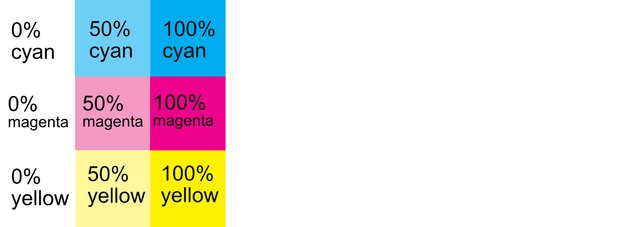
This is a 3x3 square. Let's look at the top line of the box. The top line is the cyan. The middle line is the magenta. The bottom line is the yellow. Lets use CMY in that order. In the big color chart, above, locate the color cyan. You'll see a little white square on the top-right of the little box. That means 100% cyan. If the white square is on the top-left of the box, that means 0% cyan. That means no cyan. The middle square represents 50% cyan.
The charts can be puzzling. With a little study of the charts, you'll soon be able to understand the colors. By doing the speedpainting challenges, you'll naturally learn color as you go even when you're not trying. Print the color chart out and look at them for a while. Be sure to look at the chart with the right side up (as seen here). It's a great puzzle to solve. Study how to view your chart right.
The red contains 0%C, 100%M and 100%Y.
The cyan contains 100%C, 0%M and 0%Y.
The green contains 100%C, 0%M and 100%Y.
Look at some more colors and see how those squares work.
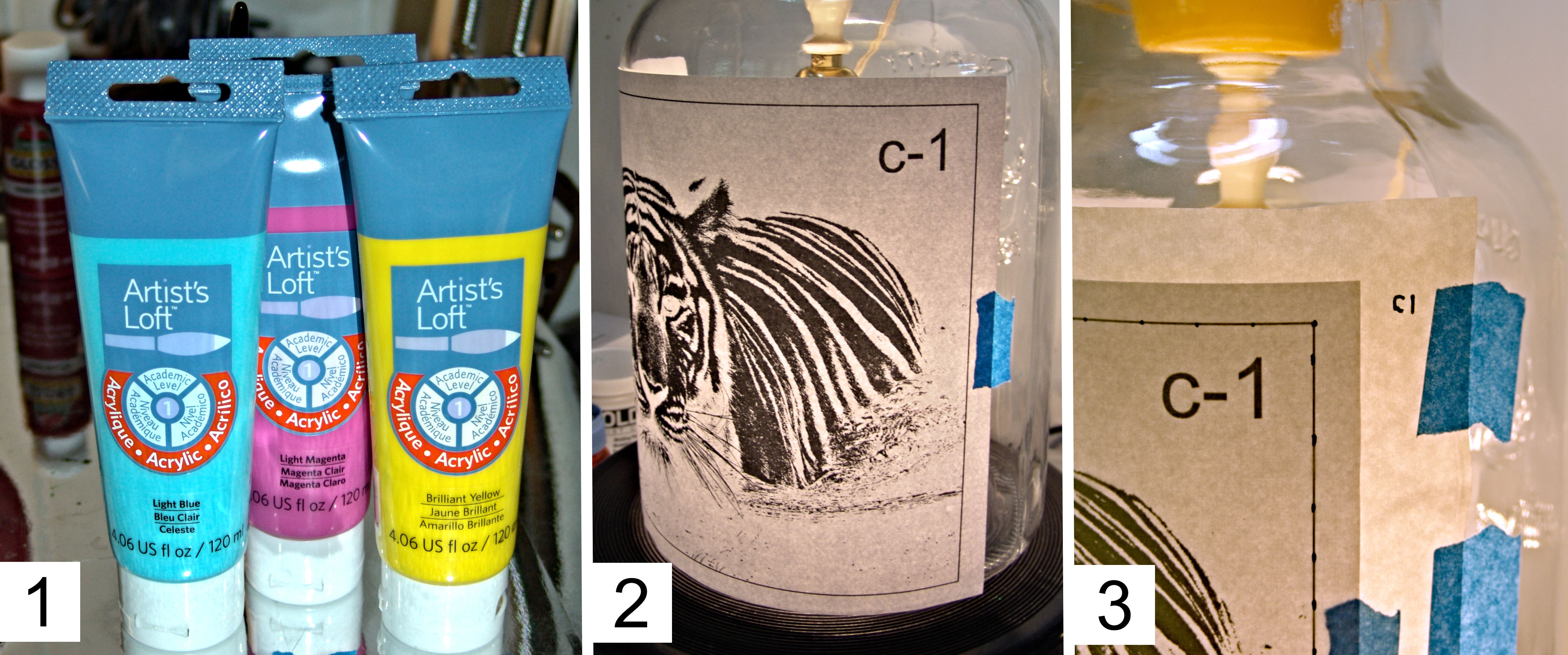
-1. Pick-a-Paint
-2. Print out c-2 (this picture has the wrong number, my error) template and tape it to a light table or a big jar with a lamp in it.
-3. Tape freezer paper on top of your print out and mark it c2 (wrong in picture, my error. [Note: there isn't a c-1, m-1 or y-1 cause 1 is all white, the color of your canvas.]). Very important: mark registration dots on canvas so you can position the canvas on other cells. See the little dots in this picture.
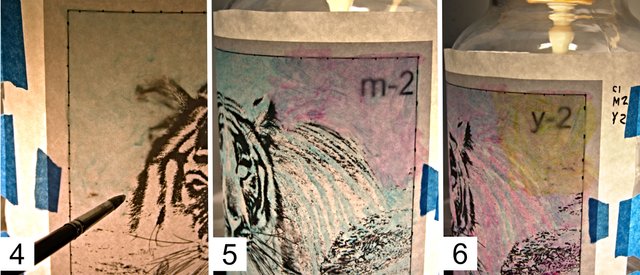
-4. Paint a 50% tint of cyan in the white area of the print out.
-5. Take you freezer paper back off. Take your print-out off. Now tape your print-out, (let's call it "cell") cell m-2 on the glass drum (jar/light table). Tape your freezer paper (lets call it "canvas") on top of m-2. paint 50% M. Don't forget to register your canvas on top of your cells.
-6. Do the same with Y.
-7. opps, I left out a -7. Nevermind number 7.
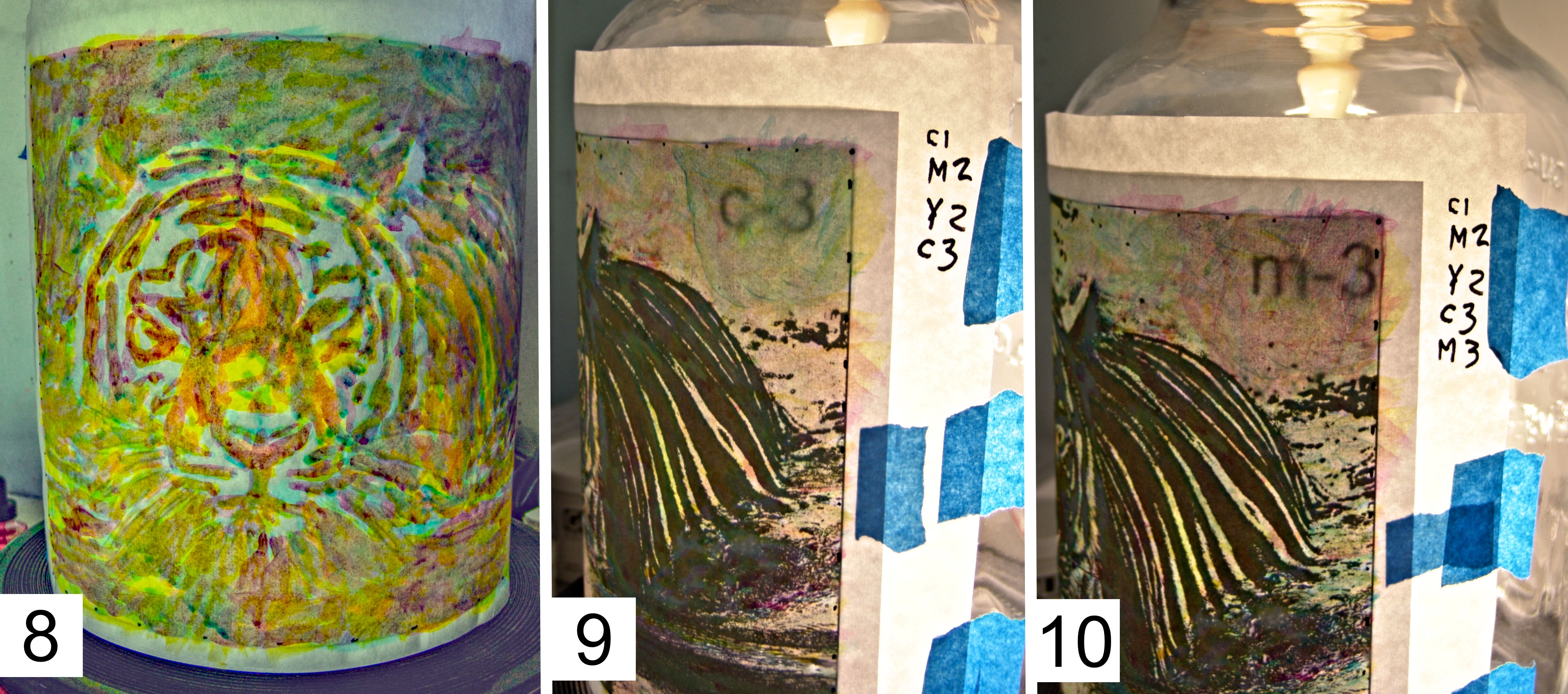
-8. Now you did 50%C, 50%M and 50%Y. Note: make sure your paints are transparent. Tip: equal CMY makes gray. Example: 50%C, 50%M and 50%Y makes gray. If the gray is too bluish then your paint is to blue or you didn't thin it enough. YES ! you can color calibrate your paintings as well as color corrections. Too yellow in the 3/4 tones? I build custom cells for corrections.
-9. Now add another coat of 50%C using cell c-3.
-10.Now add another coat of 50%M using cell m-3.
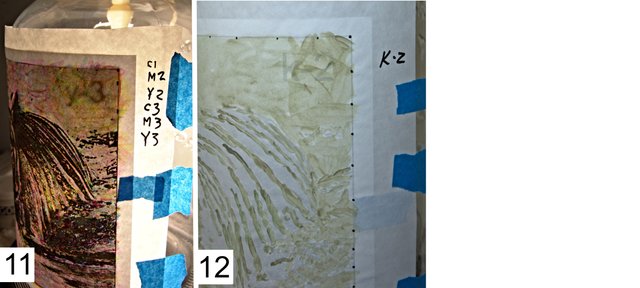
-11.Add a coat of Yellow.
-12. This is a tricky one. I gave you some K print outs. K is black or darken. I use the K cells to add darkness to my canvas. Some paints don't make black when your mix 100%CMY together. Sometimes it looks muddy, washed out and not so black. So, I gave you the K cells just in case you need to darken some areas. Here, I painted on a new canvas (new freezer paper) with K cells. I scanned it and used it as a mask (in photo editors) to darken the shadows. You can do that too. Please note, again, that there isn't a c-1 ( except for error I made here), m-1 or y-1 (only in this tiger challenge). That is because it's all white, off(0%). Your canvas already has white.

The complete artwork with a touch of K (Black)
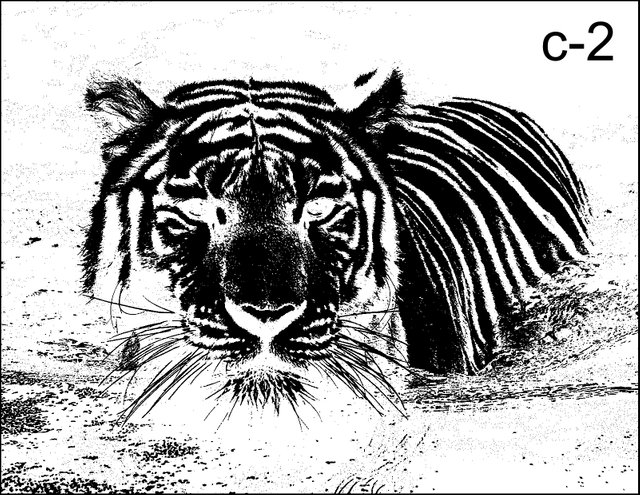
tiger-C-2
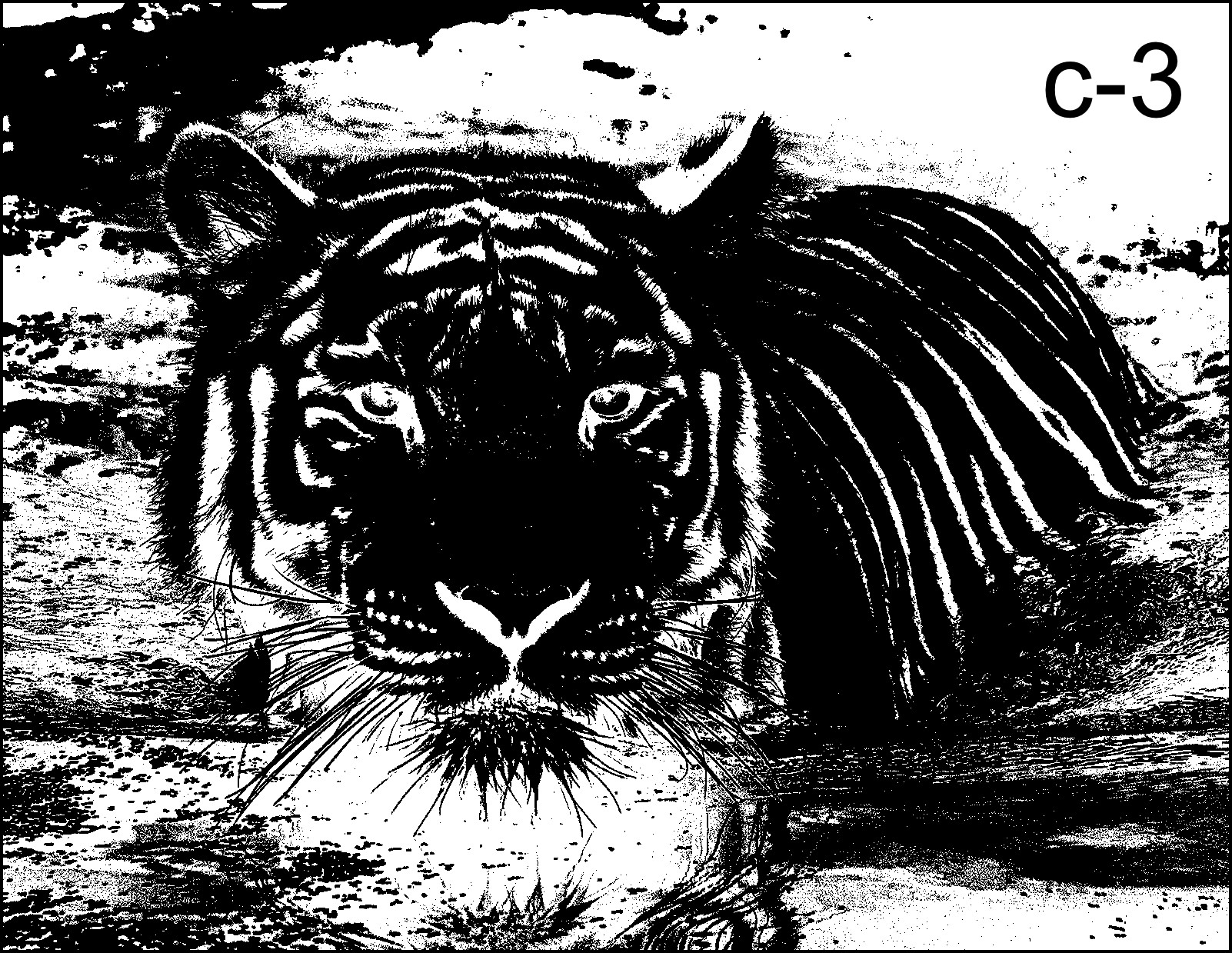
tiger-C-3
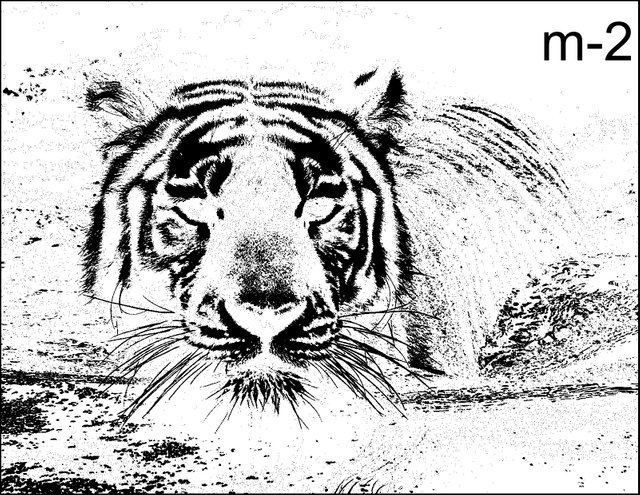
tiger-M-2
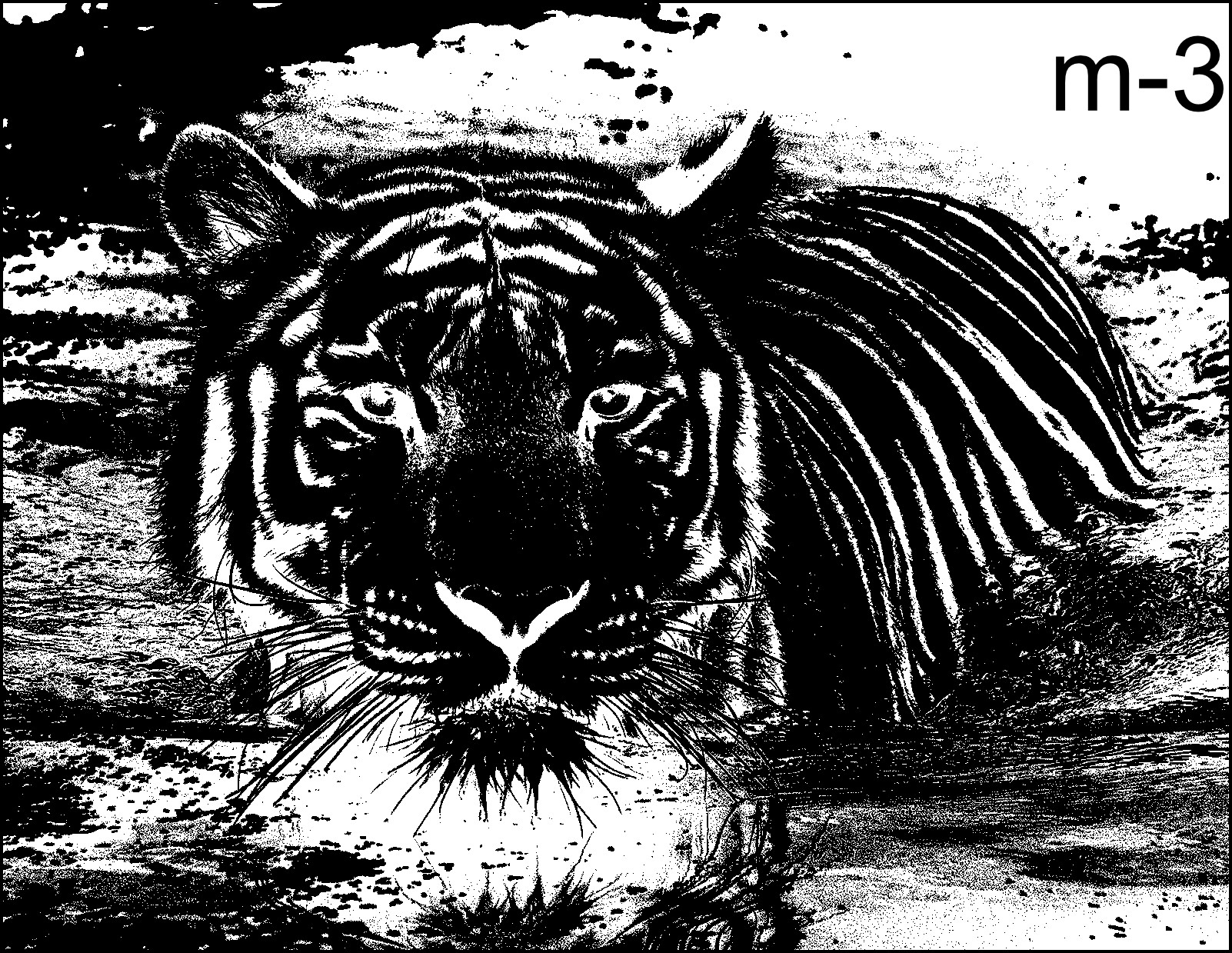
tiger-M-3
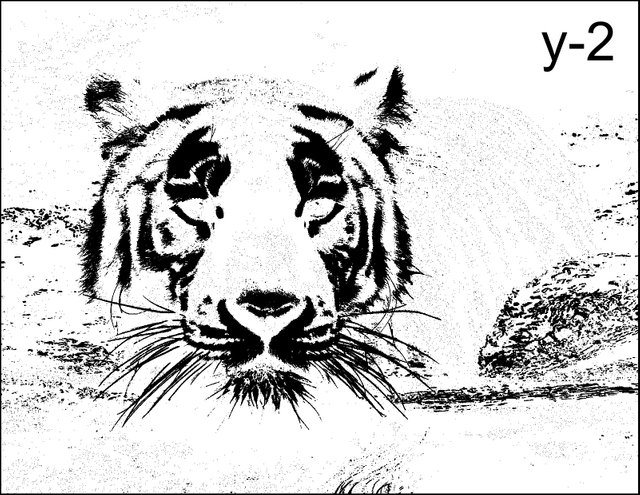
tiger-Y-2
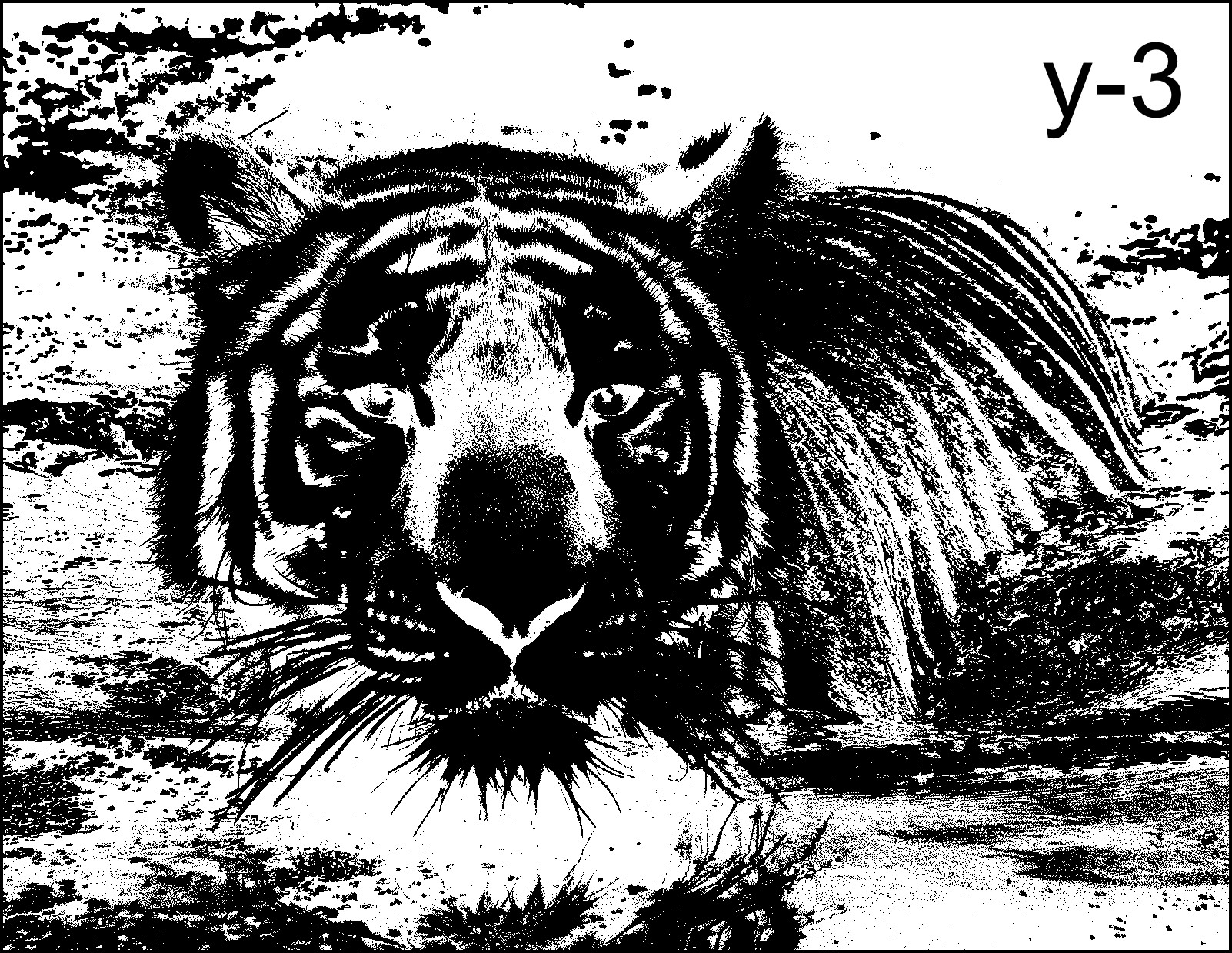
tiger-Y-3
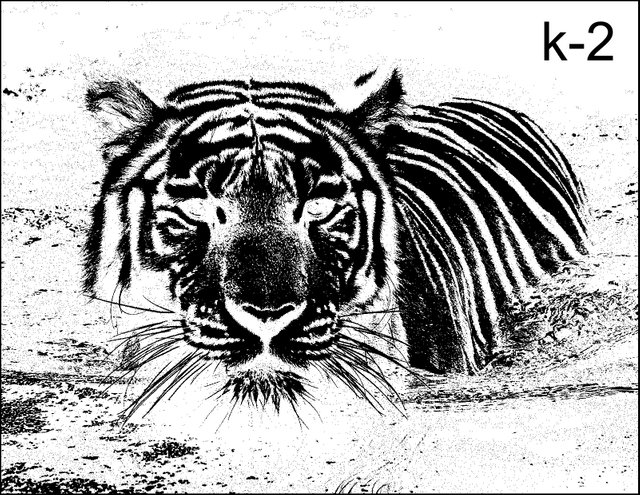
tiger-K-2
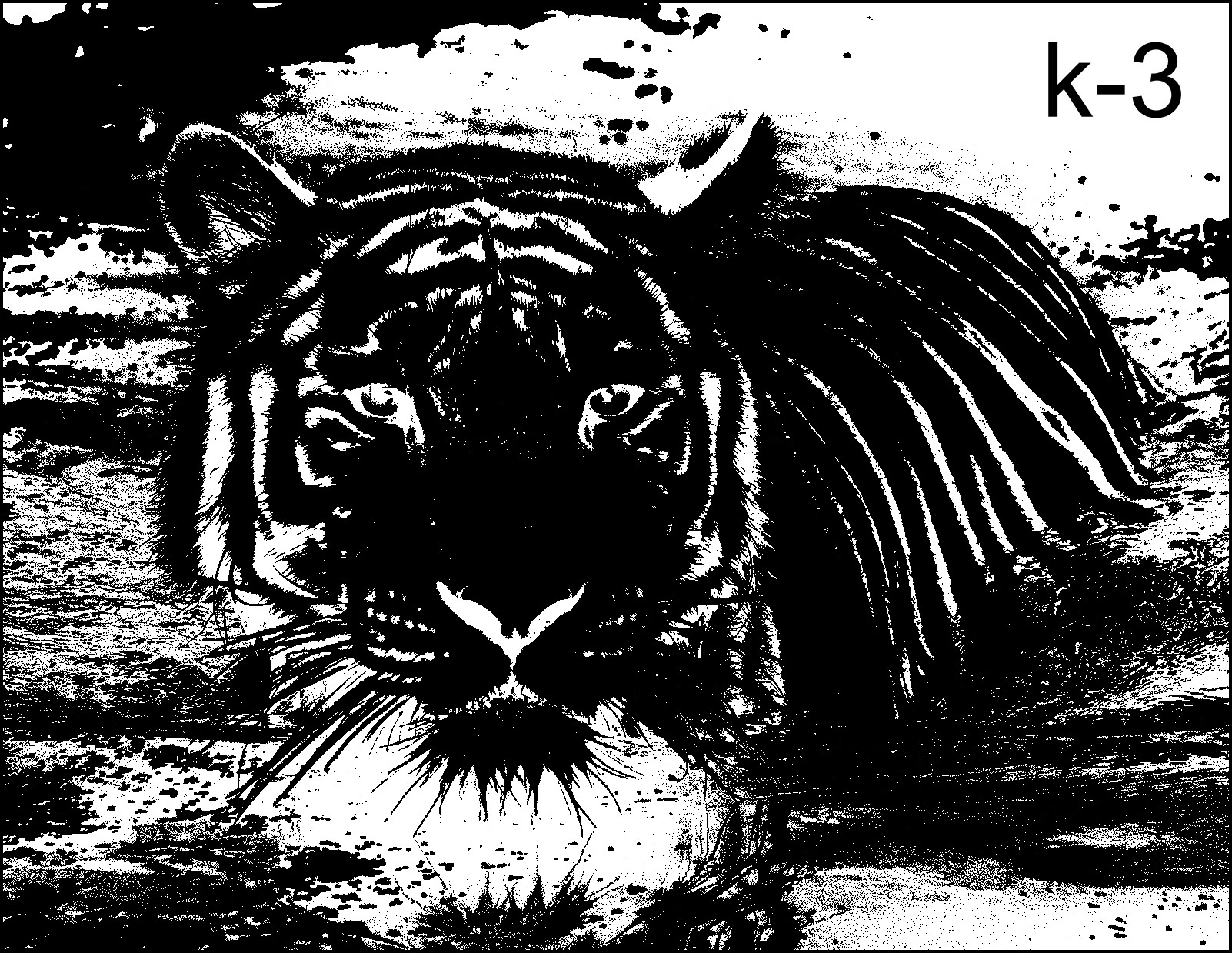
tiger-K-3
Custom cells are available for Steem. Paint your own paintings. FUN, FUN, FUN !
Impressive tutorial. :)